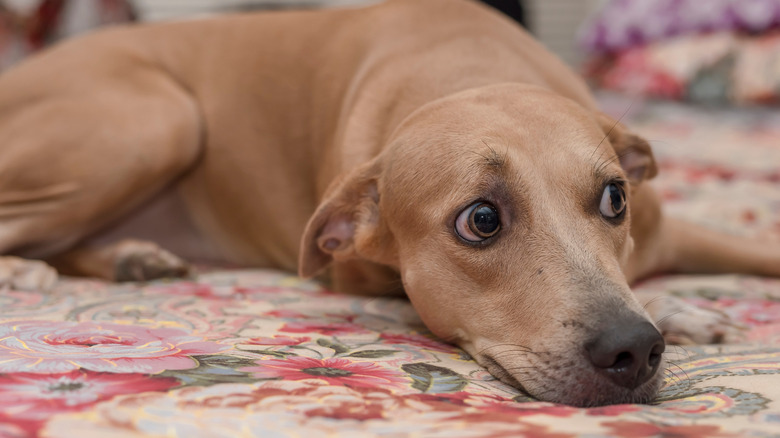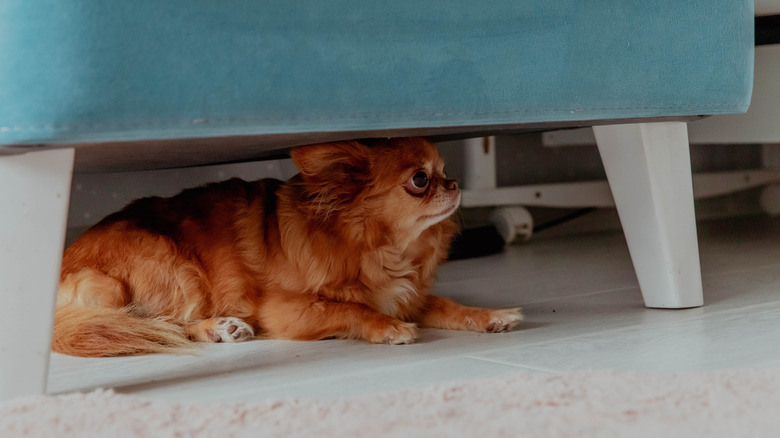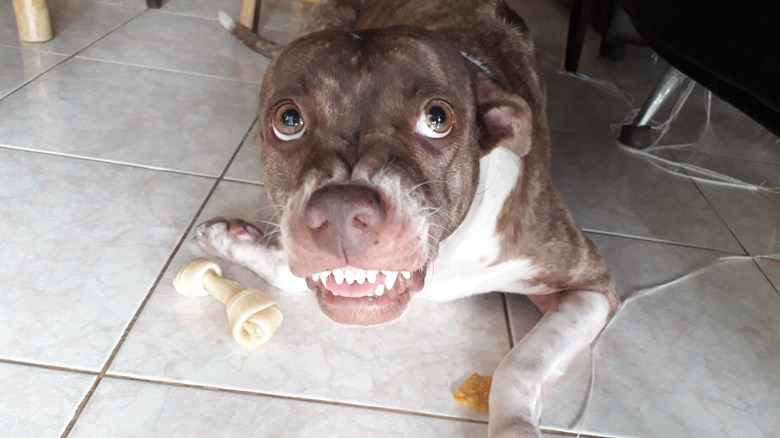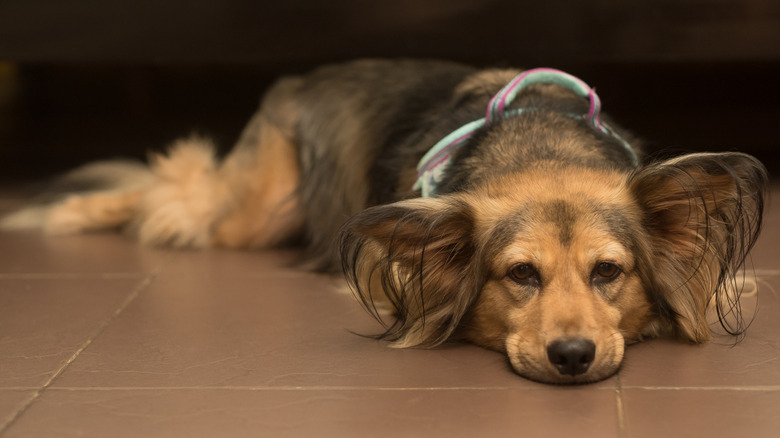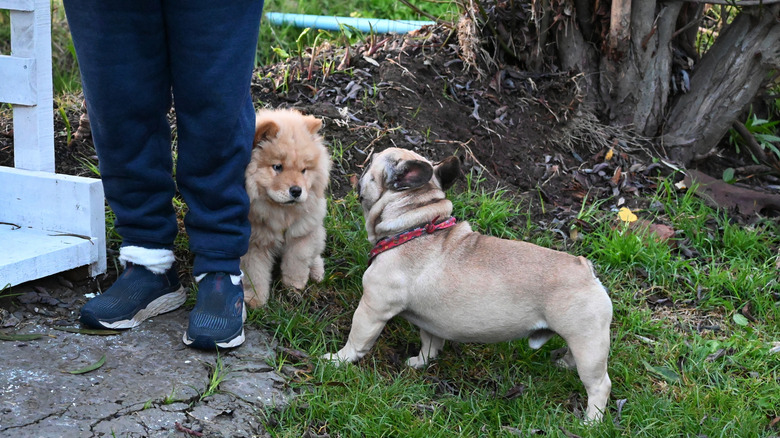If Your Newly Adopted Dog Has Behavioral Issues, It May Be 1 Of These Manageable Anxiety Types
Adopting a dog from a shelter can be compared to bringing your new baby home from the hospital. You feel excitement and joy about the addition, but sometimes, those happy feelings are coupled with confusion or concern when your pup starts misbehaving or acting strangely. Perhaps it hides under the dining room table, growls at you while eating, or makes your latest pair of running shoes its chew toy while you're at work. In many cases, these behavioral issues point to a specific type of anxiety, including separation anxiety and resource guarding.
You'll never know all the details surrounding your dog's life before it ended up at a facility or what it experienced while living at the shelter. The employees should be able to provide some information about its history, but it will never tell the whole story. Plus, adjusting to a new environment can cause anxiety, even for humans, so while you may not immediately know how to handle your dog's behavior, at least you'll be more understanding of the reason.
Many behavioral issues when adopting a dog can be managed at home with training, consistency, and positive reinforcement, so be patient. Do everything with love, compassion, and kindness, and don't give up. When you're able to identify the type of anxiety your dog is experiencing, it will help you to reduce or eliminate it.
General or fear-related anxiety can happen with shelter dogs
Perhaps you were the student who cried on your first day at a new elementary school after moving to a new city, or you knew someone who was. Humans aren't the only ones who experience anxiety from being in a new, unfamiliar place. Oftentimes, dogs and other animals need time to adjust to a new place, whether it's a shelter, a three-bedroom home with a fenced-in yard, or a third-floor apartment. No matter how inviting the place is, it will be filled with unfamiliar smells and sounds that could cause both positive and negative reactions for a dog. Fear-related anxiety is one of them.
Your dog might have experienced a level of trauma from its old life and have a reason to be fearful of new surroundings, even if it's within your safe and loving home. It might show this fear and anxiety by hiding, urinating, or pacing. Perhaps it was adopted before and brought back to a shelter, more than once. Perhaps its previous owner was abusive or neglectful. Maybe your dog never had a real home before and just needs some time to warm up to it.
Regardless of the cause of your dog's anxiety, which you may never know, be patient. Show your dog love however it allows you to. Let it know that it can trust you, and create a routine. Also keep the 3-3-3 rule in mind, which suggests that dogs could take three months to truly start to feel at home in a new domain.
Resource guarding can be a problem in adopted dogs
When you're a dog living on the streets, you don't know when you're getting your next meal. You might get used to sharing food against your will or having it snatched up by another animal before you get even one bite. These scenarios can cause a hungry dog to become aggressively protective of certain items. This resource guarding behavior, also known as possessive aggression, can continue after a dog is rescued. Even after being adopted, the behavior may linger, especially if other pets are in the home.
Newly adopted dogs exhibit resource guarding behavior with any object they consider valuable, whether it's food or a toy. When it involves food, it's known as food aggression. Picture this: You fill your dog's bowl with kibble or give it a chew toy before walking away. Moments later, you or one of your other pets approaches, and your dog responds by growling or snapping as it guards the item. Based on its previous experiences, it may think you plan to steal its prized possession from under its nose.
To address this behavior, don't yell at or punish your pup. Instead, give it space and encourage the other pets to do the same. Give it food and toys in an area that's away from the other pets and foot traffic, such as in a crate or an area blocked off by a doggy gate. Use positive reinforcement techniques like rewarding calm behavior, and consider consulting a certified dog behaviorist for assistance.
Separation anxiety can occur in a new home
Separation anxiety is a common behavioral issue that any dog can develop, even if it never lived on the streets or in a shelter. This condition occurs after a dog forms a strong attachment with its owner to the point that it experiences distress when it becomes separated from them. For some dogs, this may be the anxiety beginsafter 30 minutes or more of separation, but for others, it begins within a few minutes.
Separation anxiety ranges from mild to severe and can manifest in a number of ways. Your dog might urinate or defecate on your carpet, despite being housebroken. Pacing, barking, and howling are also common behaviors associated with this behavioral issue. Other ways that dogs express their separation anxiety include chewing on random objects or surfaces, such as shoes, walls, or doors, or by attempting to escape via digging.
While it might be heartwarming to know that your dog loves when you're around, it's best to treat the anxiety ASAP to prevent further destruction, injury, and other unwanted consequences. For mild cases, you can give your dog a treat or new toy every time you leave the house so it will associate your exit with something that brings it joy. This is called counterconditioning. Certain products can also help ease separation anxiety in your dog. Moderate and severe cases may require additional treatment in the form of desensitization and the assistance of an animal behaviorist.
Illness-induced anxiety can make dogs fearful
Sometimes, a dog develops anxiety from an internal factor, like a sickness. Like separation anxiety, illness-induced anxiety can occur in both newly adopted dogs and dogs that have never lived in a shelter. It's caused by unwanted symptoms of a health condition, such as itchiness, pain, or general discomfort. You probably know someone who gets grumpy or unpleasant in some other way when they're experiencing symptoms of an illness. Dogs can respond in the same way.
If your newly adopted four-legged friend develops a health problem, it might behave aggressively or become fearful in response to the symptoms. You might notice other non-behavioral symptoms related to the illness as well, such as vomiting or diarrhea. This medical problem may have started before the adoption or after. Either way, schedule an appointment with your vet so they can conduct a comprehensive exam on your pooch and perform any diagnostic tests if necessary. Once they can make an accurate diagnosis, they can discuss treatment options.
Social anxiety can ramp up in newly adopted dogs
Your new dog might fall in love with you and appear to have no behavioral issues at first, but once it meets someone new or another animal, it could do a 180. Some dogs just prefer the company of humans over other dogs, or they need time to adjust to the unfamiliar. On the other hand, some dogs might have issues with meeting new humans or both humans and animals. Others get nervous only around specific people or specific animals. This behavior is called social anxiety.
Sometimes, the shelter staff members are aware of pre-adoption social anxiety and include this information in the dog's description, but this isn't always the case, so be on the lookout. The signs of social anxiety are hard to miss. Your dog might hide, shake, or attempt to get as far away as possible from the unfamiliar person or animal that it encounters for the first time. It might also bark, growl, whine, or appear overly excited by jumping or licking.
To help your dog with its social anxiety, evaluate its home space to ensure it's as comfortable and safe as possible. Create a space that it knows belongs to it, whether it's a crate lined with comfy blankets, a cozy space under a bed, or an area in the corner of a room with a dog bed. You might also want to consider giving your dog a calming agent. If necessary, consult with your veterinarian or a professional dog trainer. Regardless of the type of anxiety, these steps can help your dog feel a little more comfortable in its new home.
Always consult your veterinarian before making changes to your pet's diet, exercise, or care. To find an accredited veterinarian in your area, you can search the American Animal Hospital Association's online database.
